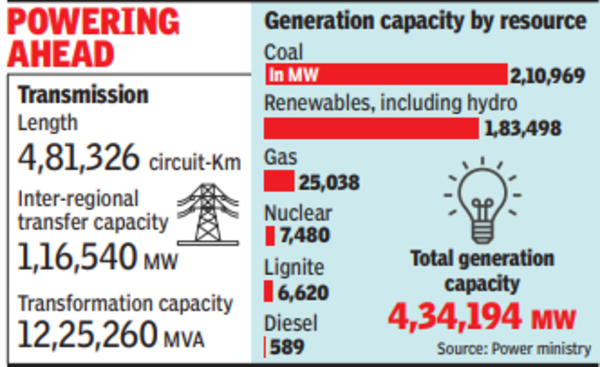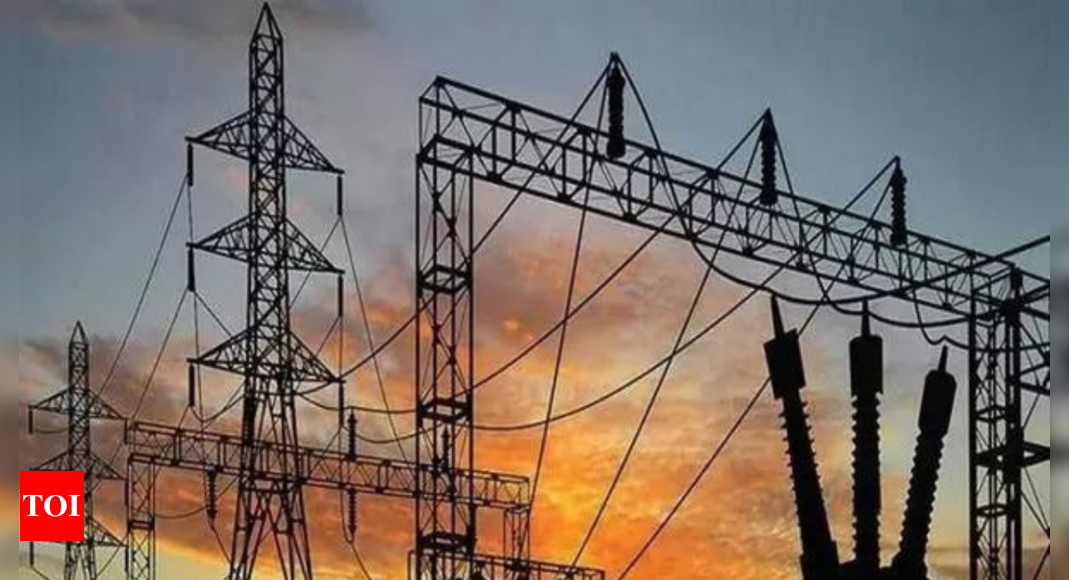[ad_1]
Despatchers manning the national control centre directing the flow of electricity are now gearing up for a peak demand of 258 GW in the coming months.
This is a far cry from July 30 and 31, 2012, when India suffered the world’s largest outage after the northern and eastern grids collapsed due to overload, plunging 620 million people, or 9% of the world’s population at the time, into darkness for over 13 hours.

Measures since then have turned India’s transmission network into the world’s largest unified grid. This helps operator Grid-India maintain balance by shifting load around when wheeling thermal, nuclear hydro, solar and wind power from one corner to another — and across borders — for distribution utilities.
“Things don’t get over for us with the day. We have to analyse data on trippings, frequency, voltage, loading of lines or transformers to see they are within limits. We go into any violation to ensure a repeat. We have to be on our toes,” Grid-India chairman S R Narasimhan told TOI.
An ‘energy management system’ monitors the grid 24X7 at two-minute intervals and 40-milliseconds gap through ‘synchrophasors’. Advance planning is done through computer simulations on worst-case demand-supply situations and check inter-region transfer limits. These are used for administering the market.
“Certain steps have to be taken at different time-horizons. For example, shutdowns of power plants for overhaul or maintenance in a fiscal year are frozen with regional stakeholders in advance. This makes life easier for last-mile operators as everyone knows how things will wok during a fiscal and plan,” Narasimhan said.
“With wind and solar, we have a situation where north would (typically) export (power) during daytime when there is high solar and so on. We put out those figures 11 months in advance for trades to happen as long as grid conduct rules and transfer limits are not breached,” he said.
In addition, week-ahead forecasts are simulated on the basis of weather outlook to estimate power available from solar and wind, determine hydro generation pattern since the rest of the demand has to be met by coal- and gas-based plants.
Meeting peak demand during daytime is not a problem due to abundance of solar power, when coal-fired plants can be backed down and ramped up during the night. Hydro is generally scheduled during peak hours when prices are high. Gas-fired power is requisitioned only if there is a shortfall still.
Overdrawal, a key reason behind the 2012 grid failure, and the shouting match between the national and state load despatchers have “come down drastically”, Narasimhan said. “Overdrawals for short periods (30 minutes to an hour) happen at times in case of sudden loss of resource in a state. But by and large they mobilise alternative resources within this time as they have realised violation of grid code is not good for anyone,” he added.
[ad_2]
Source link


